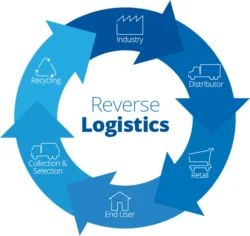In the world of e-commerce, returns are an inevitable aspect of doing business. Customers may change their minds, receive defective products, or encounter issues with sizing or fit. The ability to offer hassle-free and efficient returns is crucial for maintaining customer satisfaction and building long-term relationships. We will discuss the importance of streamlining the e-commerce returns management process and provide information about how businesses can make returns easy for their customers with a company like FirstMile.
The Impact of Easy Returns on Customer Experience
Returns can make-or-break the customer journey. When they experience a seamless returns experience has a direct impact on customer satisfaction and loyalty. When customers encounter a straightforward and user-friendly returns process, they feel more confident about making purchases, knowing they have an exit strategy if needed. On the other hand, a complex or cumbersome returns process can lead to frustration, erode trust, and potentially result in negative reviews or lost customers.
Easy returns contribute to positive word-of-mouth recommendations. Satisfied customers are more likely to share their experiences with friends, family, and online communities. This may attract new customers to your company, in turn expanding its reach and driving growth.
On the other hand, a complicated or frustrating returns process can have severe repercussions. It not only leads to customer dissatisfaction but can also result in negative reviews, damaging the brand’s reputation. In today’s digital age, where customer reviews and ratings carry significant weight, a single bad experience can have far-reaching consequences.
By prioritizing easy returns and investing in a seamless returns management process, e-commerce businesses can create a competitive advantage. Customers are more likely to choose a brand that offers a hassle-free returns experience over one that presents barriers or complications. In an increasingly crowded marketplace, where customer loyalty is hard-won, providing easy returns can be a differentiating factor that sets your brand apart.
Key Elements of a Streamlined Returns Process
- a) Clear Returns Policy: A well-defined and easily accessible returns policy is the foundation of a streamlined process. It should outline the acceptable reasons for returns, timeframes for returns, and any specific requirements or restrictions. Displaying the policy prominently on the website helps set clear expectations for customers.
- b) Easy Return Initiation: Simplify the return initiation process by providing multiple channels for customers to request returns, such as online forms, email, or dedicated customer service helplines. The return initiation process should be intuitive, requiring minimal effort from customers.
- c) Prepaid Return Labels: Providing prepaid return labels eliminates the burden of return shipping costs for customers. Including a printable label or offering a digital label that can be easily accessed and printed from the website or emailed to the customer simplifies the return shipping process.
- d) Packaging and Instructions: Clear instructions on how to package the return item and any required documentation or forms should be provided. Including a pre-printed return form with key information pre-filled can further expedite the process.
- e) Tracking and Communication: Keeping customers informed about the status of their returns is crucial. Provide tracking numbers and regular updates on the return status via email or SMS notifications. This helps build trust and ensures customers feel engaged throughout the process.
- f) Prompt Refunds or Exchanges: Once the returned item is received and inspected, expedite the refund or exchange process. Promptly issue refunds or process exchanges to minimize customer wait times and demonstrate commitment to customer satisfaction.
Leveraging Technology to Simplify Returns
E-commerce businesses can leverage technology to automate their returns management process. Here are some technological solutions that can make returns easy and efficient:
- a) Return Management Software: Implementing a dedicated return management system can centralize and automate the returns process. These platforms offer features such as return initiation, label generation, tracking, and reporting, reducing manual efforts and enhancing efficiency.
- b) Self-Service Returns Portals: Offering customers a self-service portal where they can initiate returns, track progress, and access return labels empowers them with control and convenience. Such portals save time for both customers and support staff.
- c) Artificial Intelligence and Chatbots: Integrating AI-powered chatbots into customer service channels can provide instant assistance and guidance for return-related inquiries. Chatbots can answer frequently asked questions, provide return status updates, and guide customers through the return process.
Analyzing Return Data for Continuous Improvement
Returns data is a valuable resource for e-commerce businesses. Analyzing return reasons, patterns, and trends can provide insights into product quality, sizing issues, customer preferences, and potential areas for improvement. By monitoring return data, businesses can proactively address recurring issues, enhance product descriptions or images, and make informed decisions to minimize future returns.
Going Above and Beyond: Providing Exceptional Returns Experience
While streamlining the returns process is crucial, going above and beyond customer expectations can set your business apart from the competition. Here are a few ways to provide an exceptional returns experience:
- a) Personalized Customer Support: Assign dedicated support agents to handle return-related inquiries and provide personalized assistance. A friendly and empathetic approach can make customers feel valued and supported throughout the returns process.
- b) Proactive Communication: Reach out to customers who have initiated returns to check if they need any further assistance or if there are any additional concerns. Proactively addressing their needs demonstrates a commitment to customer satisfaction and helps build stronger relationships.
- c) Product Feedback Loop: Encourage customers to provide feedback on the returned items. This feedback can be invaluable for identifying potential product improvements or addressing quality issues. Show customers that their opinions matter and that you value their input.
- d) Surprise and Delight: Consider adding a small surprise or thank-you gesture with the refund or exchange. This could be a discount coupon, a personalized note, or a small gift. These thoughtful touches can leave a lasting positive impression on customers and enhance their overall experience.
Streamlining the e-commerce returns management process is essential for delivering a seamless customer experience and fostering long-term customer loyalty. By implementing clear policies, leveraging technology, analyzing return data, and going above and beyond, businesses can transform returns into an opportunity to delight customers and differentiate themselves in a competitive market. Remember, returns are not just about handling product returns; they are an opportunity to showcase exceptional customer service and build trust that extends beyond the initial purchase. By making returns easy and hassle-free, you can turn dissatisfied customers into loyal brand advocates and drive the success of your e-commerce business.






